Immunoglobulin G N-glycan markers of accelerated biological aging during chronic HIV infection
- PMID: 38600088
- PMCID: PMC11006954
- DOI: 10.1038/s41467-024-47279-4
Immunoglobulin G N-glycan markers of accelerated biological aging during chronic HIV infection
Abstract
People living with HIV (PLWH) experience increased vulnerability to premature aging and inflammation-associated comorbidities, even when HIV replication is suppressed by antiretroviral therapy (ART). However, the factors associated with this vulnerability remain uncertain. In the general population, alterations in the N-glycans on IgGs trigger inflammation and precede the onset of aging-associated diseases. Here, we investigate the IgG N-glycans in cross-sectional and longitudinal samples from 1214 women and men, living with and without HIV. PLWH exhibit an accelerated accumulation of pro-aging-associated glycan alterations and heightened expression of senescence-associated glycan-degrading enzymes compared to controls. These alterations correlate with elevated markers of inflammation and the severity of comorbidities, potentially preceding the development of such comorbidities. Mechanistically, HIV-specific antibodies glycoengineered with these alterations exhibit a reduced ability to elicit anti-HIV Fc-mediated immune activities. These findings hold potential for the development of biomarkers and tools to identify and prevent premature aging and comorbidities in PLWH.
© 2024. The Author(s).
Conflict of interest statement
The authors declare no competing interests.
Figures
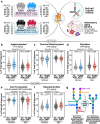
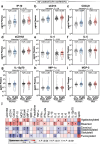
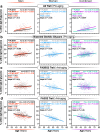
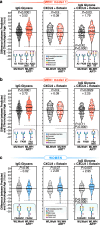
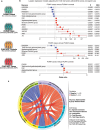
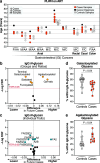

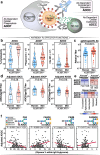

Update of
-
Plasma Glycomic Markers of Accelerated Biological Aging During Chronic HIV Infection.bioRxiv [Preprint]. 2023 Dec 31:2023.08.09.551369. doi: 10.1101/2023.08.09.551369. bioRxiv. 2023. Update in: Nat Commun. 2024 Apr 10;15(1):3035. doi: 10.1038/s41467-024-47279-4. PMID: 37609144 Free PMC article. Updated. Preprint.
References
MeSH terms
Substances
Grants and funding
- R01 AG062383/AG/NIA NIH HHS/United States
- U01 HL146245/HL/NHLBI NIH HHS/United States
- R01 DK123733/DK/NIDDK NIH HHS/United States
- P30 CA010815/CA/NCI NIH HHS/United States
- U01 HL146208/HL/NHLBI NIH HHS/United States
- KL2 TR001432/TR/NCATS NIH HHS/United States
- U01 HL146192/HL/NHLBI NIH HHS/United States
- P30 AI045008/AI/NIAID NIH HHS/United States
- U01 HL146242/HL/NHLBI NIH HHS/United States
- TL1 TR001431/TR/NCATS NIH HHS/United States
- R01 HL095129/HL/NHLBI NIH HHS/United States
- R01 NS117458/NS/NINDS NIH HHS/United States
- R21 AI170166/AI/NIAID NIH HHS/United States
- R01 AI165079/AI/NIAID NIH HHS/United States
- U01 HL146194/HL/NHLBI NIH HHS/United States
- U01 HL146241/HL/NHLBI NIH HHS/United States
- P30 AI027767/AI/NIAID NIH HHS/United States
- P30 AI050409/AI/NIAID NIH HHS/United States
- U01 HL146333/HL/NHLBI NIH HHS/United States
- UM1 AI164570/AI/NIAID NIH HHS/United States
- U01 HL146205/HL/NHLBI NIH HHS/United States
- P30 MH116867/MH/NIMH NIH HHS/United States
- UL1 TR001409/TR/NCATS NIH HHS/United States
- K24 AI120834/AI/NIAID NIH HHS/United States
- P30 AI073961/AI/NIAID NIH HHS/United States
- U01 HL146201/HL/NHLBI NIH HHS/United States
- U01 HL146193/HL/NHLBI NIH HHS/United States
- R24 GM137782/GM/NIGMS NIH HHS/United States
- U01 HL146204/HL/NHLBI NIH HHS/United States
- U01 HL146202/HL/NHLBI NIH HHS/United States
- UL1 TR001881/TR/NCATS NIH HHS/United States
- UL1 TR000004/TR/NCATS NIH HHS/United States
- U01 HL146240/HL/NHLBI NIH HHS/United States
- U01 HL146203/HL/NHLBI NIH HHS/United States
- UL1 TR003098/TR/NCATS NIH HHS/United States
- P30 AI050410/AI/NIAID NIH HHS/United States
LinkOut - more resources
Full Text Sources
Medical
Molecular Biology Databases

